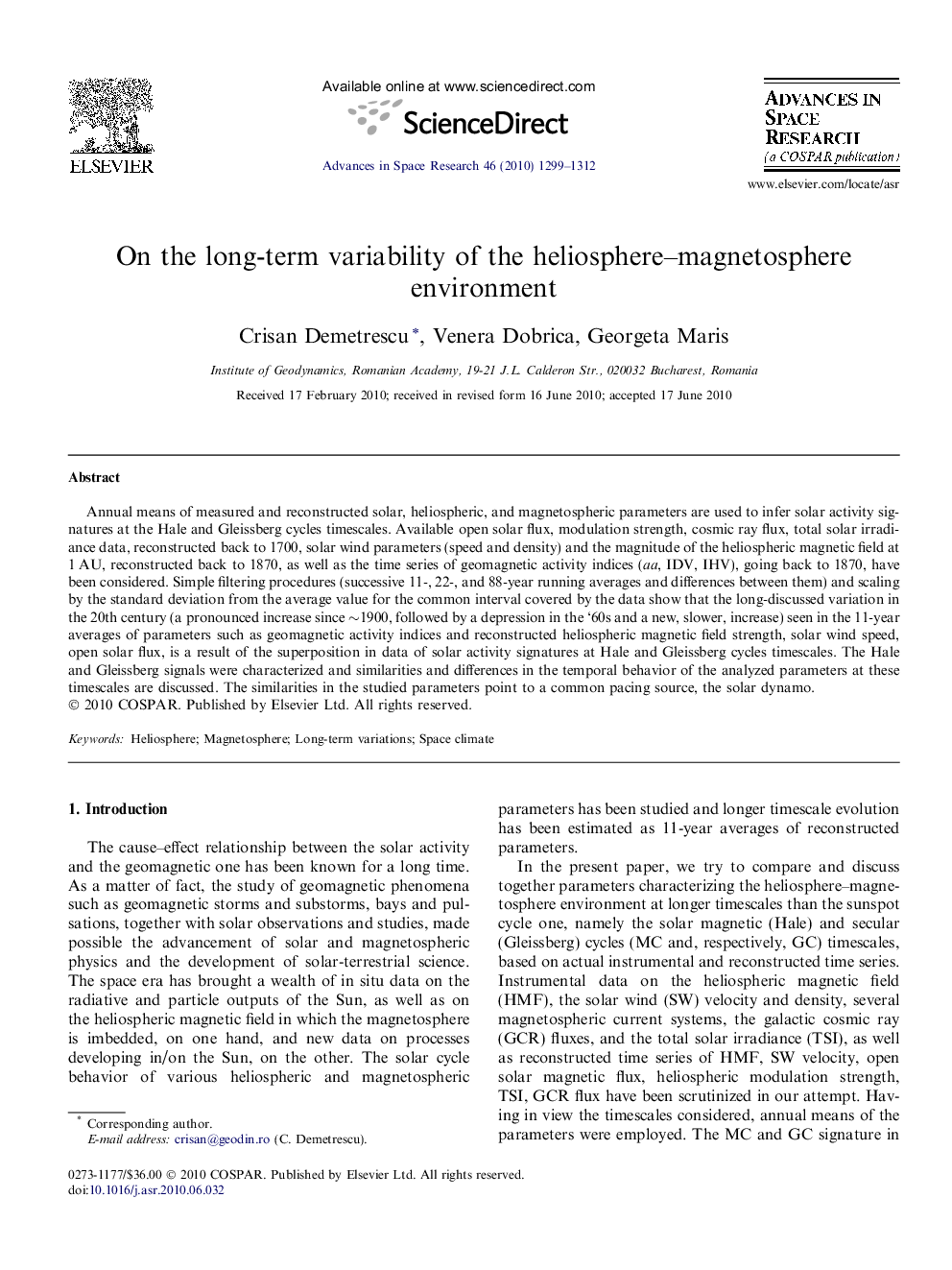| Article ID | Journal | Published Year | Pages | File Type |
|---|---|---|---|---|
| 1766272 | Advances in Space Research | 2010 | 14 Pages |
Annual means of measured and reconstructed solar, heliospheric, and magnetospheric parameters are used to infer solar activity signatures at the Hale and Gleissberg cycles timescales. Available open solar flux, modulation strength, cosmic ray flux, total solar irradiance data, reconstructed back to 1700, solar wind parameters (speed and density) and the magnitude of the heliospheric magnetic field at 1 AU, reconstructed back to 1870, as well as the time series of geomagnetic activity indices (aa, IDV, IHV), going back to 1870, have been considered. Simple filtering procedures (successive 11-, 22-, and 88-year running averages and differences between them) and scaling by the standard deviation from the average value for the common interval covered by the data show that the long-discussed variation in the 20th century (a pronounced increase since ∼1900, followed by a depression in the ‘60s and a new, slower, increase) seen in the 11-year averages of parameters such as geomagnetic activity indices and reconstructed heliospheric magnetic field strength, solar wind speed, open solar flux, is a result of the superposition in data of solar activity signatures at Hale and Gleissberg cycles timescales. The Hale and Gleissberg signals were characterized and similarities and differences in the temporal behavior of the analyzed parameters at these timescales are discussed. The similarities in the studied parameters point to a common pacing source, the solar dynamo.
